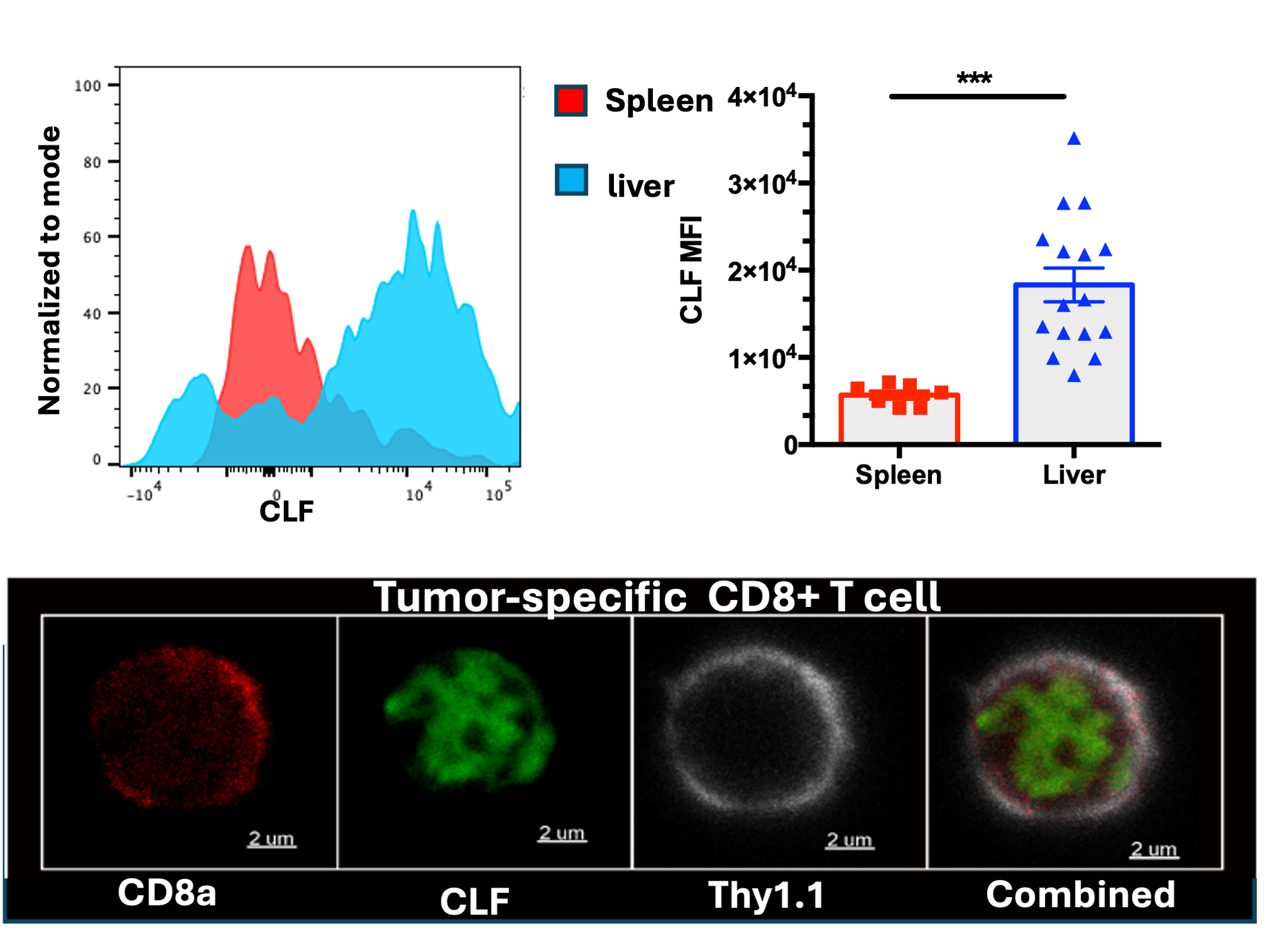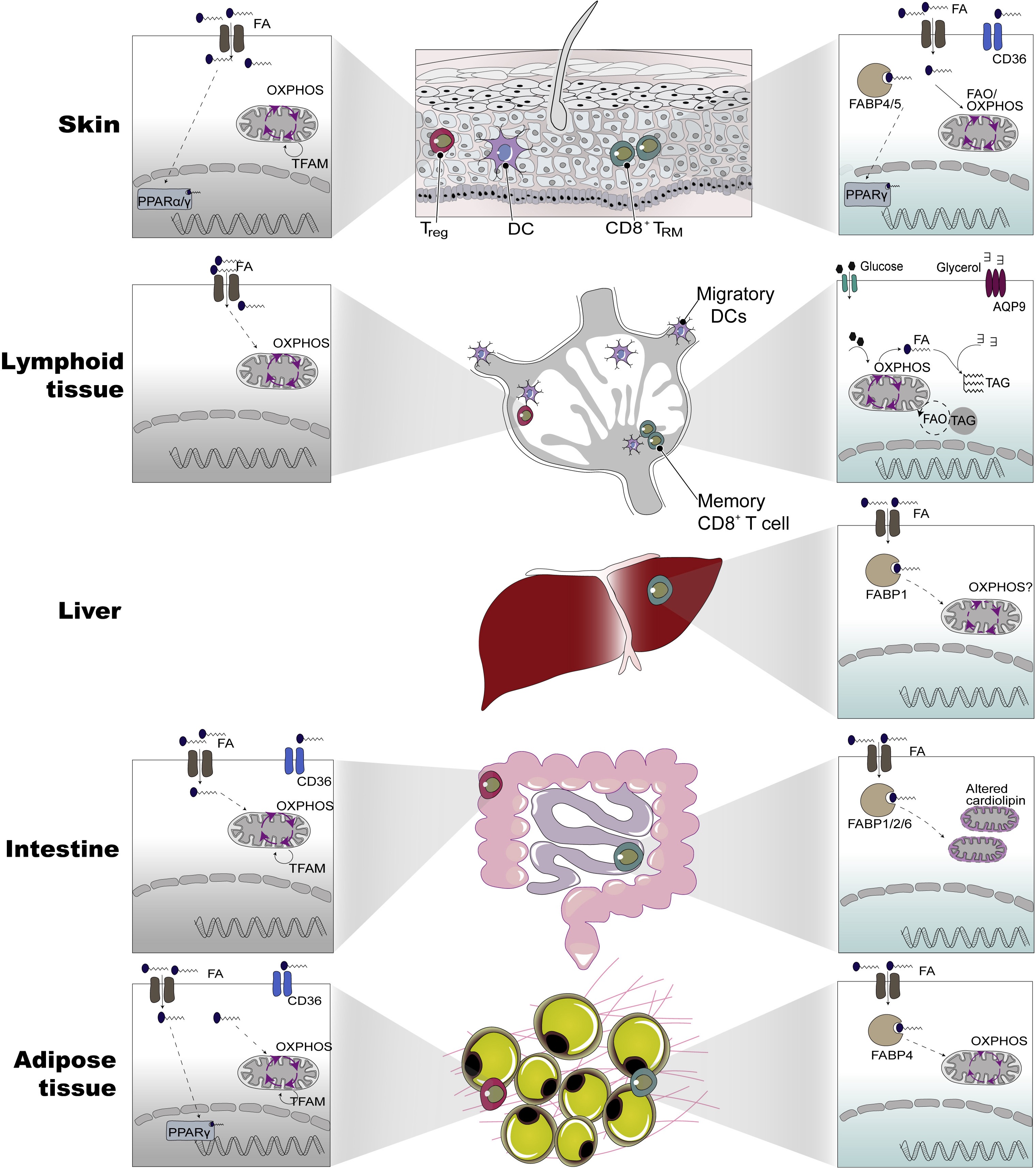Research
Metabolic adaptation of T cells to the liver
T cells that go into different tissues in the body have to adapt differently in order to survive and function optimally. To understand how T cells adapt in a tissue-specific manner, we started to first look at the liver and asked how T cells adapt to bile acids in the liver (a primary site of bile acid synthesis) during cancer. We found that tumor-reactive T cells take up bile acids that accumulate intracellularly leading to cell death. However, when T cells are engineered to express a bile acid transporter that is expressed by a functional T cell, these tumor-reactive T cells overcame the toxic effects of bile acids. Thus, in order for a T cell to survive in a bile acid rich microenvironment such as a liver tumor, T cells need to adapt by expressing bile acid transporters. Therefore, we are interested in mechanistically determining the fate of bile acids in T cells.

Influence of hepatocyte metabolism on T cell responses
One major factor that contributes to tissue-specific microenvironment is the metabolic state of the tissue. To understand the role of host tissue metabolism on T cell responses, we began to look at bile acid metabolism, which strongly affects T cells. Using the AAV system, we knocked out different enzymes in bile acid synthesis genes in hepatocytes and found different effects on immune responses, including T cells. It is thus critical to determine how each of these enzymes shapes T cell responses and expand these analyses to other metabolic pathways in the liver.

The microbiome and its derived bile acids shape T cell responses
Another factor that shapes T cell responses—not just in one organ, but across the whole body—is the microbiome. While the microbiome can influence immune responses in many ways, we found that microbial derived bile acids strongly influence T cell responses either positively or negatively, depending on the species. For example, lithocholic acid species were largely immunosuppressive, whereas ursodeoxycholic acid is pro-inflammatory. We are actively interested in understanding the contribution of the microbiome, their metabolism, and the mechanism by which these metabolites shapes tissue-specific T cell responses.

T cell adaptation in other tissues
Since every tissue is physiologically and metabolically different, we envision studying how T cell responses are shaped within different tissues both in healthy and disease states. Finally, we will deepen the analysis by resolving T cell metabolism and differentiation spatially within tissues.
